Many years ago, I got a small cutting board, sort of as a joke gift. But it’s been awfully handy to have around, and as you can see by the scars, it’s been well used.
The scars weren’t bothering me, but the black mildew, which happened because I didn’t ever put any protective oil on this board, was.
It’s been bugging me for a while, but for some reason, I decided I really needed to deal with it yesterday.
I poked around on the internet, searching for fixes, and some people recommended using a bleach solution.
So, I poured a bleach solution into a glass, soaked a mildewy wooden spatula handle as a test, and experienced little to no success.
Then I tried a soak in straight up bleach, and even that did nothing.
At that point, I decided something a little more powerful would be good, so I dug out my handy-dandy orbital sander and went to work.
I made a big mess, but it really didn’t take that long to sand this down, and the difference is pretty incredible.
The back still has a teeny bit of black, but I think I can live with that amount.
And to prevent more mildew problems in the future, I gave the board a nice coat of the oil I got with the cutting board I received at Christmas.
I decided my spatula handles were a lost cause because if I sanded them down like I sanded my board, they wouldn’t be the right size to hold the rubber spatula part anymore. I think it would just fall right off.
But! I do have one new wooden-handled spatula that I picked up at Aldi recently, and since an ounce of prevention is worth a pound of cure, I put a coat of oil on that handle.
I also oiled the old spatula handles, because I figured I can at least keep more new mildew from growing.
I’m sure I’m not the only person who’s dealt with this problem, so I’m very interested to hear if you guys have more tips for me. Do share!
____________________________
P.S. Food Waste Friday is over at Simply Being Mum today. And for the record, today I’m composting a bit of pineapple and a very mushy, disgusting avocado.
Joshua’s 365 post: Behind the Door

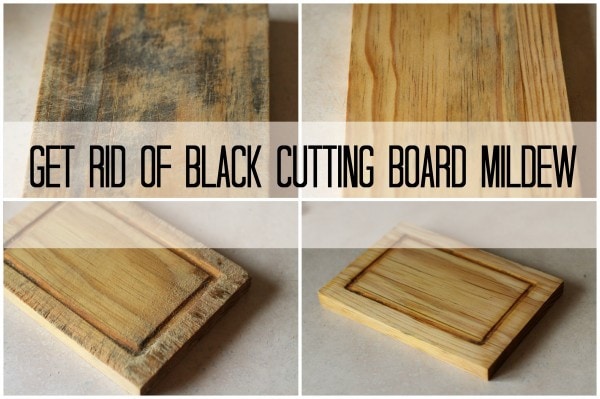
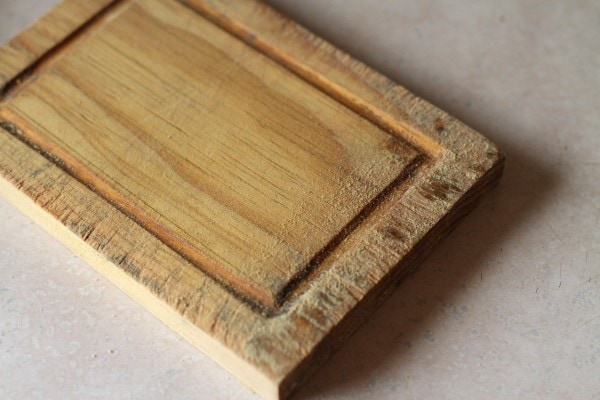
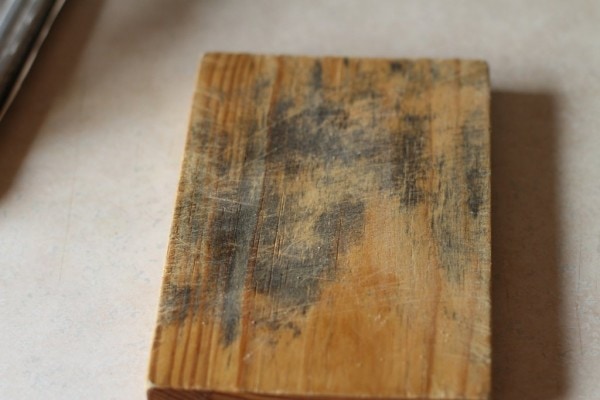
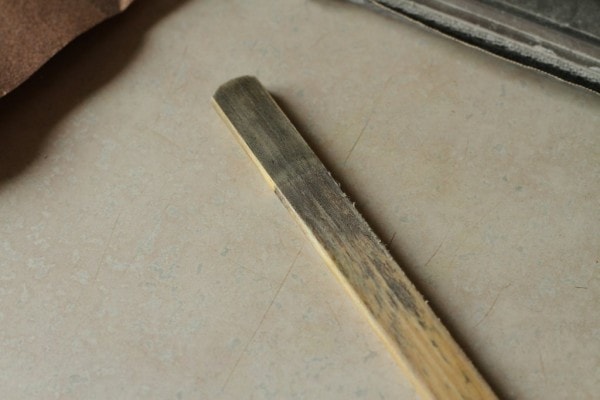
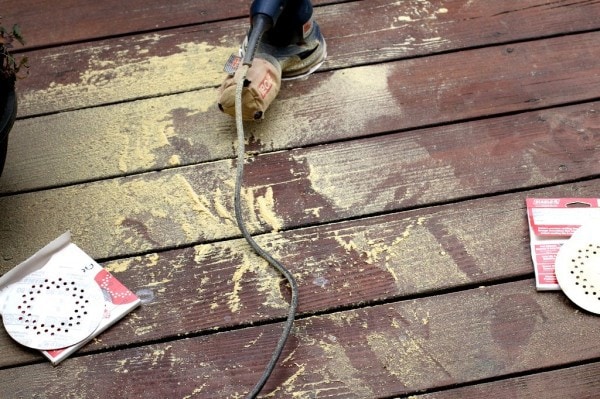
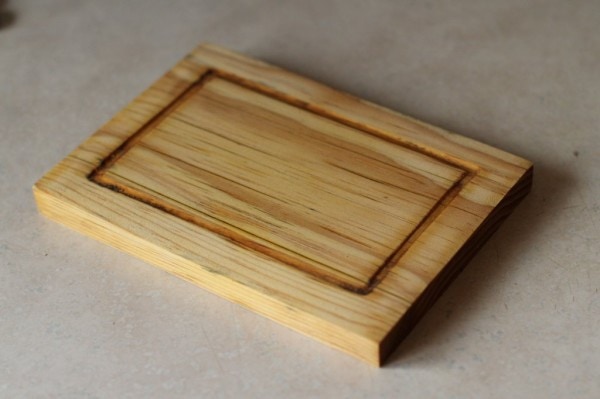
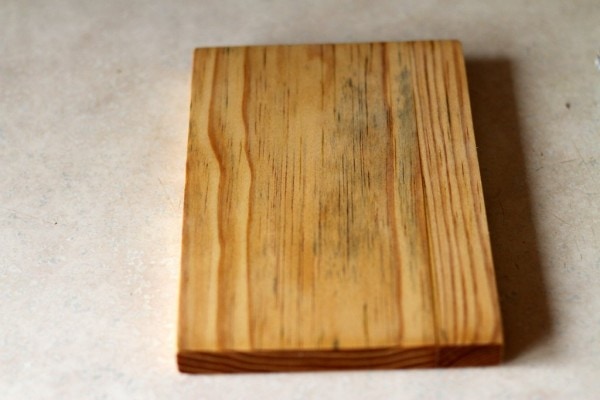
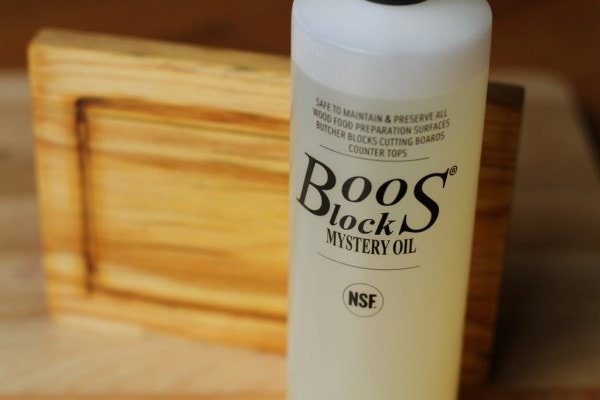
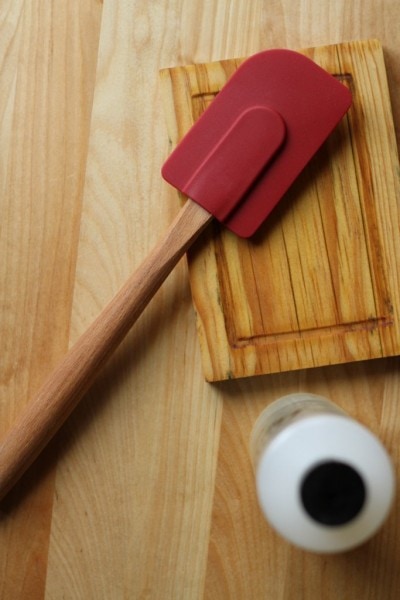
Helen
Tuesday 4th of June 2024
Thanks! I read advice about using salt & lemon & other solutions to get the black out of cutting boards, but nothing worked. I figured there was no solution except sanding it, will do that. Good to have confirmation.
Dan
Monday 6th of September 2021
I'm in the same boat you were, I just used a bleach mixture that seemed to have little to no results, I started sanding and here I am double checking to make sure it's worth my while, I appreciate the reassurance!
Rani
Friday 13th of August 2021
The board looks a ton better mostly because you got rid of the knife grooves, not the mold. The black mold (which is what it is!) gets deep into the wood, unfortunately. Unless you really rout into that channel (which is still black in the ‘after’ photos), I don’t think you’re safe, oil or no oil. And no, bleach doesn’t do squat, at least when I’ve tried it. I’m trying vinegar, but I doubt very much that I’ll succeed. Here’s the thing—that little ‘joke’ board is made of too soft a wood for your knives. I’ve had this problem with an acacia board I picked up at Aldi. Looked great, scratched far too easily, which meant bacteria and mold could accumulate in the grooves (it was ‘wounded wood’). My bamboo boards don’t scratch—but they dull knives too quickly, which is annoying. I’ve moved over to teak boards, which can be acquired at TJ Maxx and HomeGoods and places like that for decent prices. Oil them from the start, following the instructions, and they’ll take care of you far better than this risky little thing. I get that you’re frugal—I am, too—but this is a dangerous post, to suggest to people that what you did is an adequate remedy. Now, if you were to take a router and completely eliminate the nasty stuff in the grooves, and then go back and sand all the way down until the black is gone, then treat with bleach or vinegar, then oil… you might be able to save it. But I’d be willing to bet that your tiny little ‘bar board’ (that’s what it’s for, cutting lemons and limes for cocktails) would break if you went far enough down to eliminate the mold. Worth trying; what do you have to lose? But it’s still obviously gross, and the oil will wash off over a few uses, and then you’re in trouble all over again.
Pam
Monday 5th of April 2021
Thank you!! This helped so much.
Rodney
Sunday 2nd of August 2020
I know this is a late replay to the original post. But please do yourself a favor. ANYTIME you see a product like this (i.e. "Mystery Oil") OR A PRODUCT THAT DOES NOT LIST ITS INGREDIENTS . Always look up the Material Safety Data Sheet (MSDS for short)
A quick Google of "John Boos MYSB Mystery Butcher Block Oil, MSDS" will tell you:
ITS MINERAL OIL!!! mostly, with - di alpha tocopherol ( a synthetic form of vitamin E ) used for its antioxidant properties also found in many personal care products such as skin creams and lotions to promote skin healing and reduce scarring after injuries such as burns. - Carnauba Wax - probably used as a thickening agent, a binder & sealer - Beeswax - probably used as a thickening agent, binder & sealer
NO MYSTERY HERE. except WHY do people keep allowing themselves to be misled into buying overpriced repackage, relabeled... stuff (not my original choice of words). Brings to mind the old Snake Oil salesmen.
Granted the OP received this product with the cutting board...
Save yourself a ton of money and get the generic Mineral Oil from your local pharmacy dept, it's sold as a laxative so it's Food Grade.
Dyllan
Thursday 24th of September 2020
Wow thank you